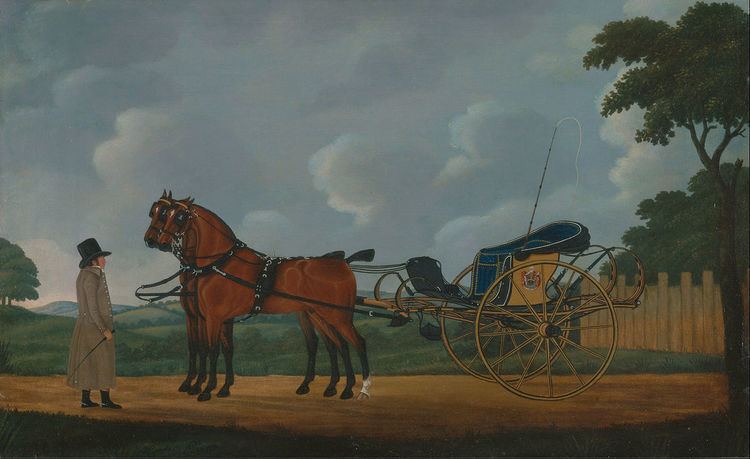 | ||
A curricle was a smart, light two-wheeled chaise or "chariot", large enough for the driver and a passenger and— most unusual for a vehicle with a single axle—usually drawn by a carefully matched pair of horses. It was popular in the early 19th century: its name — from the Latin curriculum, meaning "running", "racecourse" or "chariot" — is the equivalent of a "runabout" and it was a rig suitable for a smart young man who liked to drive himself, at a canter. The French liked the English-sounding term "carrick" for these vehicles. The lightweight swept body with just the lightest dashboard hung with a pair of lamps was hung from a pair of outsized swan-neck leaf springs at the rear. For a grand show in the Bois de Boulogne or along the seafront at Honfleur, two liveried mounted grooms might follow.
In Northanger Abbey Henry Tilney drives a curricle; John Thorpe drives a gig, but buffoonishly praises it as "curricle-hung". Margaret Sullivan found that Jane Austen's assignment of vehicles to the two men was far from arbitrary.
Curricles were notorious for the accidents their drivers suffered. Thus, in the romance novel Miss Carlyle's Curricle by Karen Harbaugh, the heroine inherits the curricle in which her uncle died in a racing accident.
